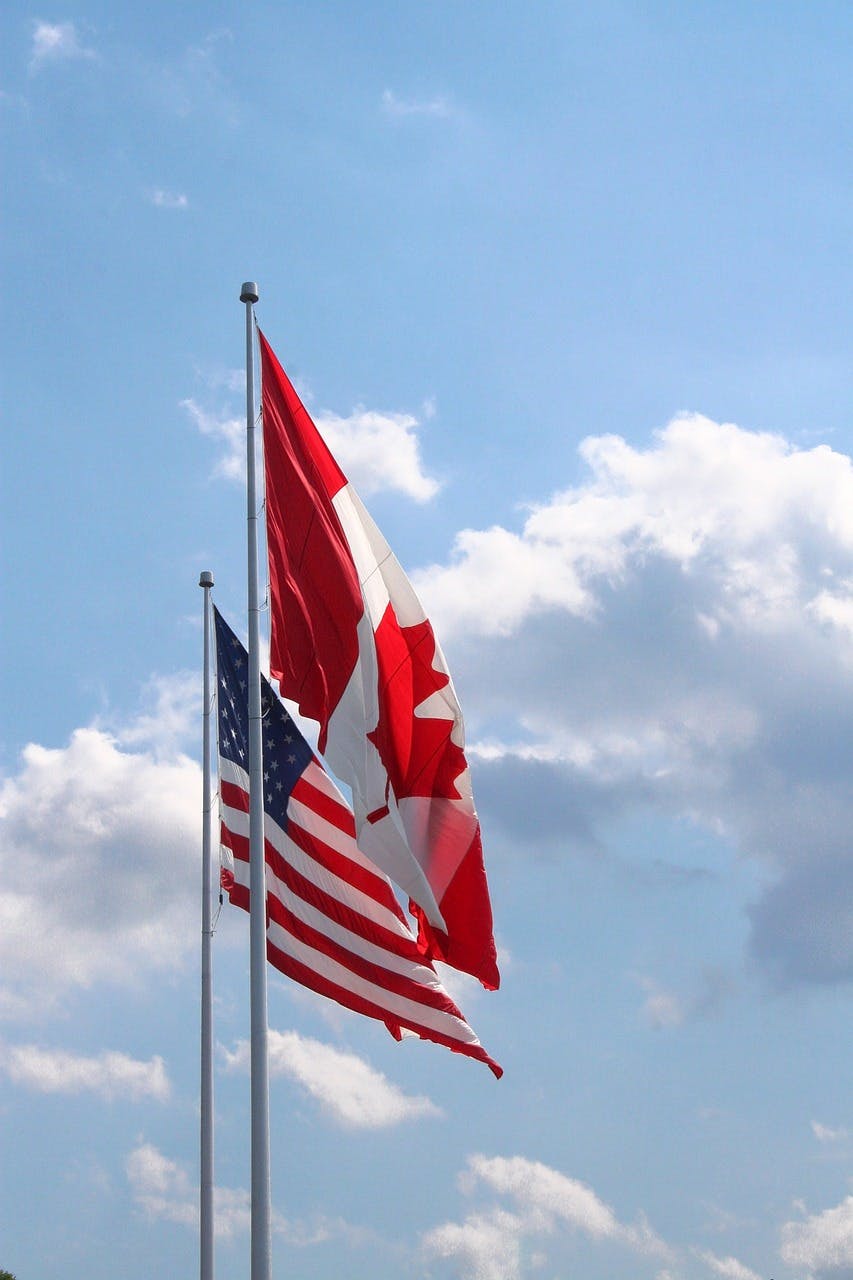U.S. Tariffs: What you need to know
Stay informed on the latest developments with tariffs and access resources to support your business.
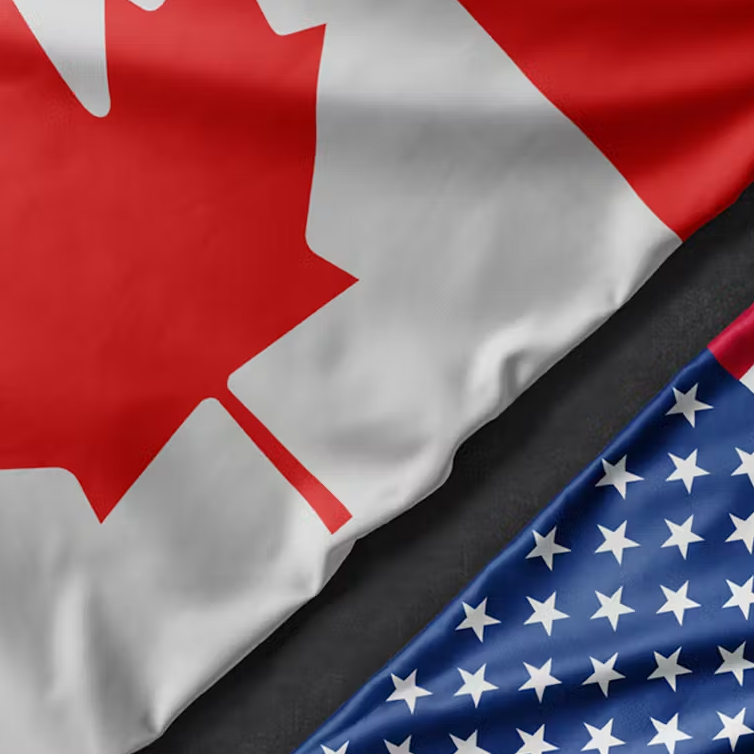
Current Tariffs
This is the latest update on tariff developments between Canada and the United States, reflecting changes as of August 14, 2025.
- 35% tariff on all imports that do not comply with the Canada-United States-Mexico Agreement (CUSMA).
- 10% tariff on non-CUSMA compliant energy and potash.
- 50% tariff on copper.
- 50% tariff on aluminum and steel.
- 25% tariff on automobiles.
- 27% (approximately) anti-dumping and countervailing duties on softwood lumber.
- Removal of the de minimis tariff exemption for imports valued at or under US $800, effective August 29.
What you need to know
The ongoing tariff situation is rapidly changing and deeply impacting businesses across size and sector. We have compiled a list of the latest developments, what we are advocating for at all levels of government and the supports that are available to you.
Our advocacy relies on input from our members. We are always eager to hear from you – whether to share your experience, provide input on our recommendations to government, or to let us know how we can serve you during this time of uncertainty and rising costs.
Tariff Tracker: Previous Updates
August 2025
- On August 1, the United States carried through with their threat and imposed a 35% tariff on all imports that do not comply with CUSMA.
- On August 1, the United States imposed a 50% tariff on Canadian copper.
- On August 5, Canada announced $1.2 billion in financial supports for softwood lumber producers affected by U.S. tariffs.
July 2025
-
On July 8, the United States threatened to impose a 50% tariff on copper and a 200% tariff on pharmaceuticals.
-
On July 10, the United States threatened to impose 35% tariffs on non-CUSMA compliant goods. The deadline for a trade deal was extended from July 21 to August 1.
-
On July 16, Canada introduced counter-tariff measures to limit foreign steel imports. Countries without a free trade agreement with Canada will face a tariff rate quota of 50% of 2024 volumes; imports exceeding that quota will face a 50% tariff. Non-U.S. partners that have a free trade agreement with Canada will face a tariff rate quota level of 100% of 2024 volumes; imports exceeding this quota will face a 50% tariff.
- On July 25, the United States imposed a 25.6% anti-dumping duty on Canadian lumber. With a pre-existing 6.74% tariff on countervailing duties, this brings the total lumber duties to above 27%.
- On July 30, the United States announced the removal of the de minimis tariff exemption for imports valued at or under US $800, effective August 29.
June 2025
- On June 4, the United States increased tariffs on aluminum and steel from 25% to 50%.
- On June 16, at the G7 Summit, Canada and the United States agreed to finalize an economic and security deal by July 21.
- On June 27, the United States ended negotiations with Canada due to the Digital Services Tax.
- On June 29, Canada rescinded the Digital Services Tax, allowing trade negotiations with the U.S. to continue.
April 2025
- On April 5, the United States imposed tariffs ranging from 10-50% on nearly all trade – meant to address tariffs, taxes and non-tariff international trade barriers. Canada was exempt from these tariffs under CUSMA.
- On April 9, Canada imposed a 25% tariff on U.S. made vehicle imports. Canada will also direct the income from these tariffs to affected workers and businesses.
- On April 9, the United States paused their near global reciprocal tariffs meant to address tariffs, taxes and non-tariff international trade barriers.
- On April 15, Canada announced temporary relief from retaliatory tariffs (for a 6-month period) for goods imported from the U.S. that are used in Canadian manufacturing, processing and food and beverage packaging, and for those used to support public health, health-care, public safety, and national security objectives.
- On April 15, Canada announced a remissions framework for automakers, allowing automakers to import a certain number of U.S. manufactured vehicles tariff free so long as they continue to produce vehicles in Canada and complete planned investments in Canada.
March 2025
- On March 4, the United States imposed a 10% tariff on Canadian energy products and a 25% tariff on all Canadian imports. These tariffs were paused.
- On March 4, Canada imposed a 25% tariff on $30-billion worth of U.S. imports.
- On March 5, the United States exempts automobiles and parts imported from Canada and Mexico covered under CUSMA for one month.
- On March 6, the United States imposed a 10% tariff on potash and energy products from Canada that are not covered by CUSMA and a 25% tariff on non-CUSMA goods.
- On March 10, Canada imposed a surtax on electricity exported from Ontario to U.S. states. This tax was suspended following a meeting between Premier Doug Ford and Commerce Secretary Howard Lutnick.
- On March 12, the United States imposed a 25% tariff on steel and aluminum products from Canada.
- On March 12, Canadian imposed a 25% tariff on $29.7 billion of U.S. imports.
- On March 20, China imposed a 25% tariff on Canadian seafood and pork and a 100% tariff on canola oil, canola meal and pea products.
- On March 26, the United States announced a 25% tariff on all automobile imports to the U.S., effective April 2.
Supports for your businesses
We have compiled a short list of resources available to you to navigate the ongoing impacts and uncertainty of tariffs. Please note that this list is not comprehensive. For more resources, visit Startup Canada’s Tariff Toolkit.
- Become CUSMA compliant
- Government of Canada
- Find a Canadian supplier
- Canada Tariff Finder
- Export from Canada
- Tariffs, rules, and regulations
- EI Work-Sharing Program
- AgriStability
- Business Development Bank of Canada
- Support for Canadian businesses impacted by uncertainty around U.S. tariffs
- Trade Impact Program
- Pivot to Grow Loan: Provides up to $2 million top counter tariff impacts
- Gowling WLG: Trade turbulence: Can your business weather the tariff storm?
- Canadian Chamber of Commerce: Canada-U.S. Trade Tracker
Latest work
We dive deeper into the issues that are impacting our business community at the local, provincial, national, and even international level. Step beyond the headlines of the day and gain a deeper understanding.
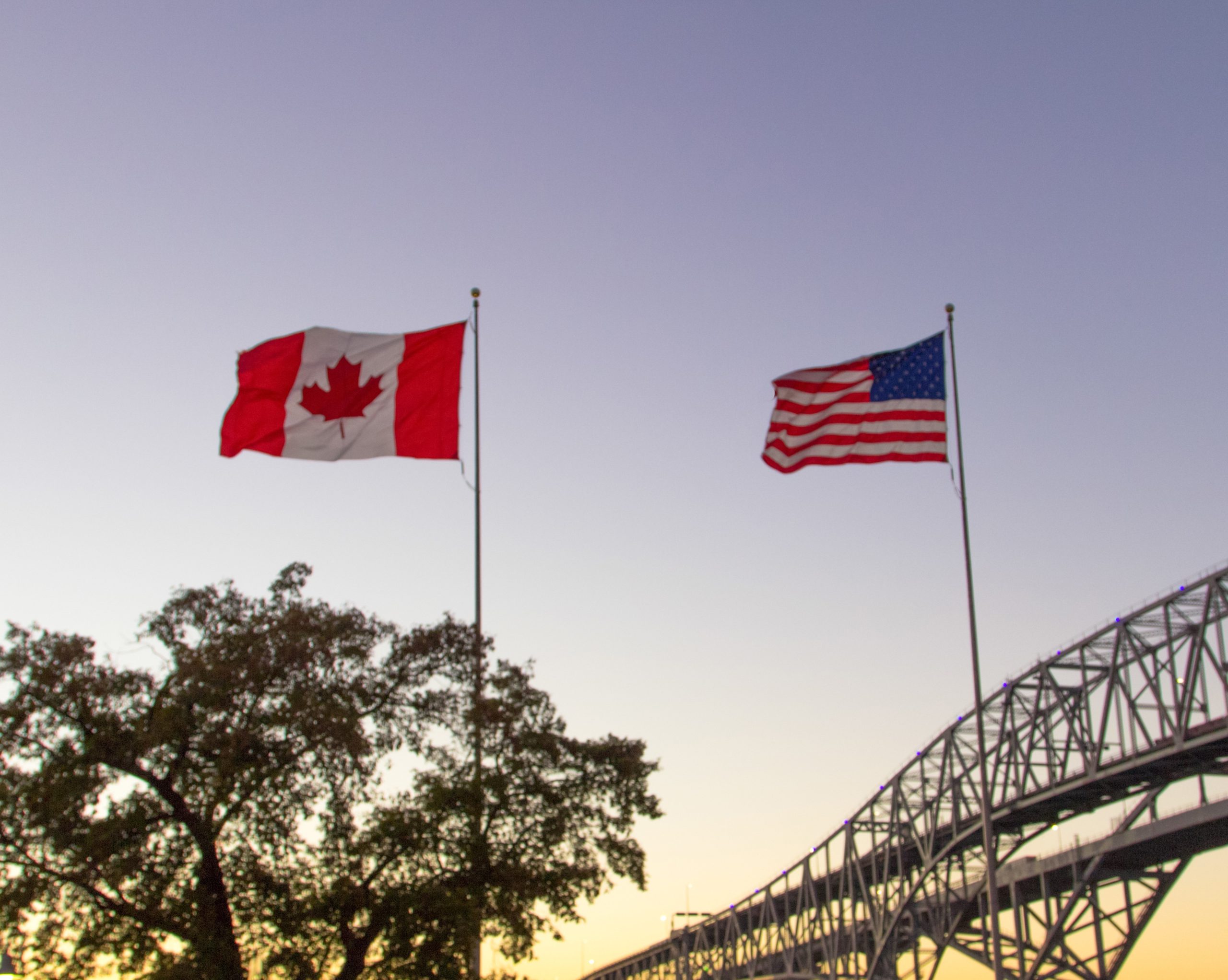
- News Releases, Policy and Advocacy
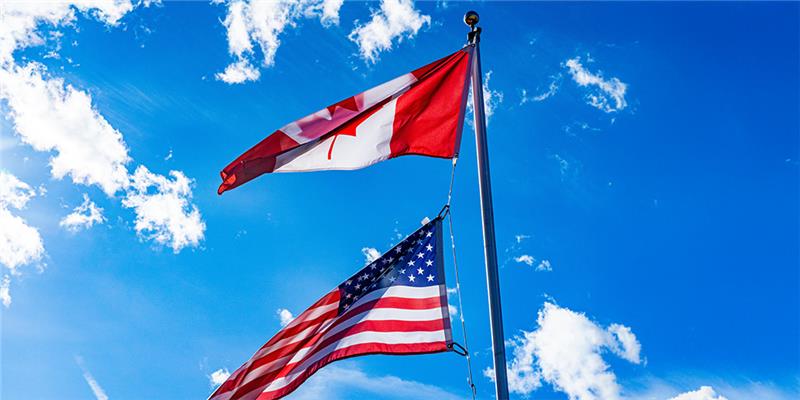
- News Releases, Policy and Advocacy
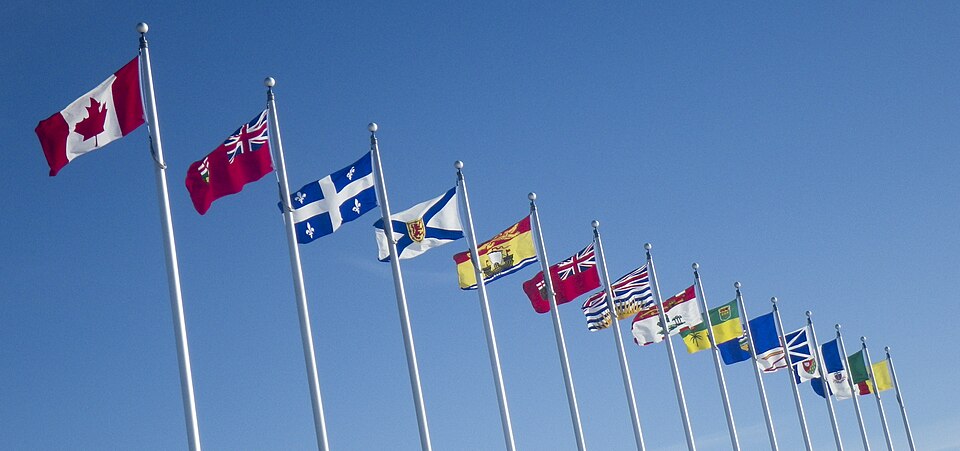
- News Releases, Policy and Advocacy
Our Recommendations
We’re working closely with all levels of government to develop immediate and longer-term plans, working to mitigate risk in the immediate term and make good use of a crisis in the long term.
As an immediate response, we recommend governments:
Advocate for the removal of tariffs
Canadian governments should continue their advocacy to demonstrate the value of the Canada-U.S. relationship, working to have the United States remove tariffs imposed on Canadian industries.
Mitigate impacts
Develop immediate and short-term financial supports for businesses and workers to insulate Canadians from financial harm, with particular consideration to discretionary consumer sectors that are more likely to be impacted by tariffs, lower consumer confidence and higher prices.
Support access to capital
Develop a loan program for businesses with significant exports to the U.S. to help provide capital required to expand into new markets.
Share resources
Provide businesses with resources to help them find alternative non-American inputs and understand likely economic impact on their business.
Work collaboratively
Collectively work with business leaders, particularly with companies who operate on both sides of the border, to bolster advocacy south of the border.
Reduce red tape
Make it easier for businesses to operate by reducing unnecessary and duplicative regulation and streamlining process to support businesses.
Address domestic poilcy & improve competitiveness
Prioritize the Canadian economy; removing problematic regulations, including the emissions cap, Bill C-59 and others.
Attract talent and tourism
Market Calgary and Canadian destinations within Canada and other foreign non-U.S. markets to offset decreased American tourism and leverage the low Canadian dollar, and cross-country desire to support our domestic economy.
Longer term, we encourage governments to:
Advance internal trade
Expeditiously and deliberately work to eliminate interprovincial barriers and advance mutual recognition of regulation to accelerate the changes.
Update procurement
Use government procurement to increase purchase of local Canadian goods, supporting local and exercising fiscal responsibility.
Bolster cross-border infrastructure
Invest in cross-border and trade infrastructure to increase capacity in our supply chains, increasing Canada’s reliability as a trading partner and promoting confidence for businesses as they change suppliers.
Expand markets
Open new markets and opportunities for businesses to expand in diversified and emerging markets, helping offset expansion opportunities no longer viable in the U.S.
Remove trade irritants
Particularly in light of potential CUSMA renegotiations and efforts to expand into new markets, address trade irritants and shore up strategic leverage ahead of negotiations.
Government response
Federal response
The Canadian government has imposed retaliatory tariffs on specific products to make American goods more expensive in Canada, negatively impacting U.S. companies and ultimately, consumers. While necessary from a diplomacy perspective, this increases the cost of many goods sold in Canada. Where there are substitutes, Canadians can switch to those to avoid paying higher prices, however where there are no alternatives, Canadians will be forced to pay more – despite the fact the intrinsic value of what is being purchased hasn’t increased.
Provincial response
The Alberta government will be modifying procurement practices for government agencies to prioritize Albertan and Canadian options.
Grocery and other retailers will be assisted with labelling Canadian products and will be asked to voluntarily purchase their stock from Albertan and Canadian businesses.
Alberta has also been collaborating with other provinces and territories to reduce interprovincial trade and mobility barriers. As of August 2025, Alberta has signed a total of three memorandums of understanding (MOU) with Ontario, Saskatchewan and the Yukon to improve the flow of goods and workers.
City of Calgary response
The City of Calgary has indicated they will develop a tariff tracker to understand the impacts on Calgary, adjust their procurement policy, and create a webpage that helps businesses understand available substitutes for their goods.
On March 31, the city announced specific changes to its procurement policy. Changes include
- For large procurement of goods or materials: the Social Procurement Questionnaire weighting will be increased to 10%. This is up from the current range of five to 10%. This increase will benefit small and medium businesses.
- For large procurement of services: the Social Procurement Questionnaire weighting will be increased to 10%. The range will stay within five to 10% and we will review service procurements on a case-by-case basis. These are for purchases over $75,000 for goods and services and over $200,000 for construction.
- For small procurements: get all three quotes from local suppliers, where possible. This is up from getting one local quote out of three quotes. When not possible, try to prioritize Canadian suppliers. These are for purchases under $75,000 for goods and services and under $200,000 for construction.
What you can expect
Explore the insights on how tariffs and our government’s response are reshaping the economy, impacting consumer prices and influencing market stability.
Tariff Impact on Canadian Goods
A tariff on Canadian goods means that Americans pay a tax of 25% on Canadian goods, which goes directly to the U.S. government. This makes Canadian products less competitive in the U.S. because the cost to consumers increases.
Effect on Consumer Spending
With rising prices, consumer spending may decrease. We’re particularly concerned about the impact to sectors that fall in the category of discretionary expenses, which are usually the first hit by economic challenges.
Switching to Local Goods
Local and non-American goods will be relatively cheaper. Looking for opportunities to switch to local options will help businesses and consumers mitigate rising costs.
Contract Renegotiations
Contracts may be renegotiated or adjusted. Suppliers may amend contracts using emergency provisions, meaning the prices of various goods already agreed upon may increase, particularly for items ordered with a long lead time such as construction inputs. Some may not be honoured at all.
Inflationary Impact
Ultimately, by increasing prices, tariffs are inflationary, the Bank of Canada is currently projecting inflation to be 0.7% higher under tariffs. In light of this, the Bank of Canada is anticipated to announce more aggressive rate cuts, possibly to 2% or 2.5% mid-year, should tariffs persist.
Investor Hesitancy
Investors on both sides of the border are hesitant to invest capital because they do not have the certainty required to make investments. Access to capital will likely be a bigger issue in the short term but could be moderated by further interest rate cuts. Overall, there will be a significant amount of volatility in the markets, as both debt and equity markets adjust to all the uncertainty.
Long-term Economic Impact
Longer term, it’s anticipated this will impact Canadian GDP growth (0.5% projected with tariffs vs. 2.5% projected without), and employment lower by 36,000 in 2025 and 60,000 in 2026. Alberta could see unemployment numbers persist at the 7% range.
Oil Price Pressure
Oil prices have been under pressure, with WTI dropping from the average of $76.55 US per barrel in 2024, falling to $66.31/bbl on Wednesday. This is the lowest price for WTI since 2021, when it averaged $68.13/bbl and largely the result of the OPEC+ decision to increase oil production. There are no substitutes for Canada’s oil production, as it feeds the US refining complex. Additionally, energy use is inelastic, which means consumers will pay the higher prices at the pump due to the tariffs, muting the immediate impact to the sector. Further, the low Canadian dollar softens the impact of lower prices, when resources are sold in USD and converted to CAD.

Keep it Canadian: Shop Local
Encouraging support for businesses that contribute to the Canadian economy and community during these uncertain times.
Our advocacy work
Reports
- Calgary businesses brace for impact: survey reveals deep concerns over U.S. tariffs
- Inflection Point: A plan for a competitive, productive, prosperous Canada
- 2024 U.S. Election: Impact on the Calgary Business Community
- 2024 U.S. Election: Republican & Democrat Economic Policy
- 2024 U.S. Election: Recommendations to Canadian Governments
Releases & Statements
- Business community deeply concerned by Trump’s imposed tariffs
- Calgary Chamber releases national plan for Canada’s economic prosperity
- Calgary Chamber & business community stand ready to support Team Canada
- Calgary Chamber calls on federal government to de-escalate and avoid trade war
- Open letter to Premier Smith regarding impending threats of U.S. tariffs
- Open letter to Prime Minister Trudeau, Minister Joly and Minister LeBlanc regarding impending threats of U.S. tariffs
- Calgary Chamber stresses need for strategic & immediate response to U.S. tariffs
If it matters to you, it matters to us.
We are your champion at the table with government – let us know what’s impacting you and your business.


